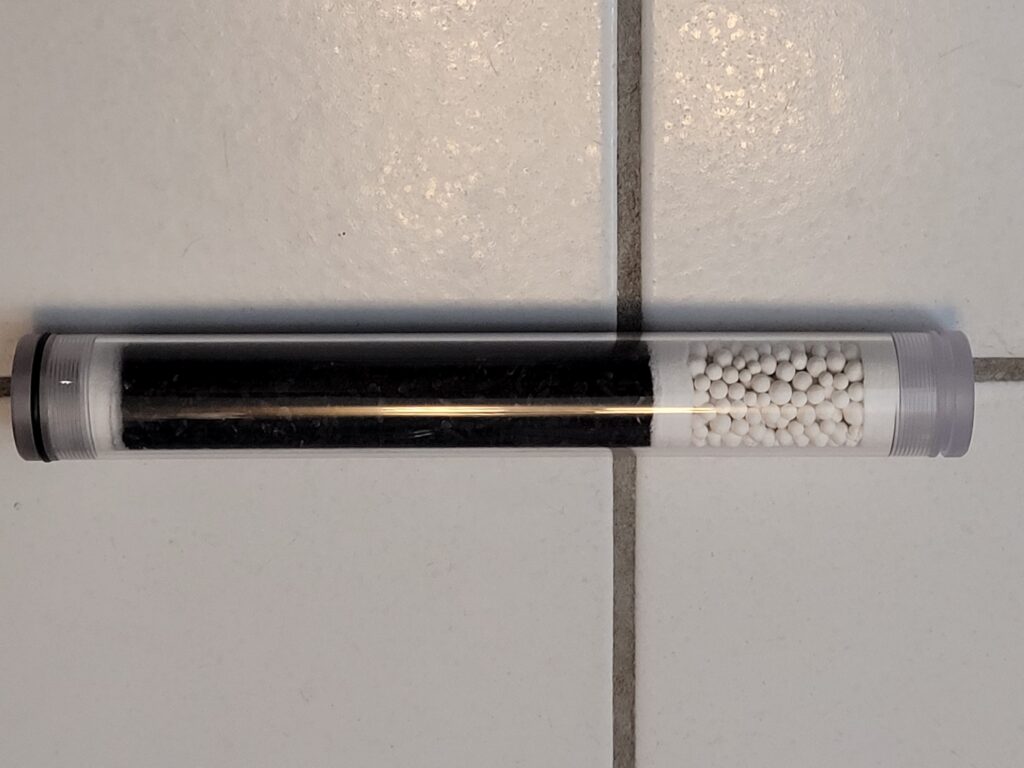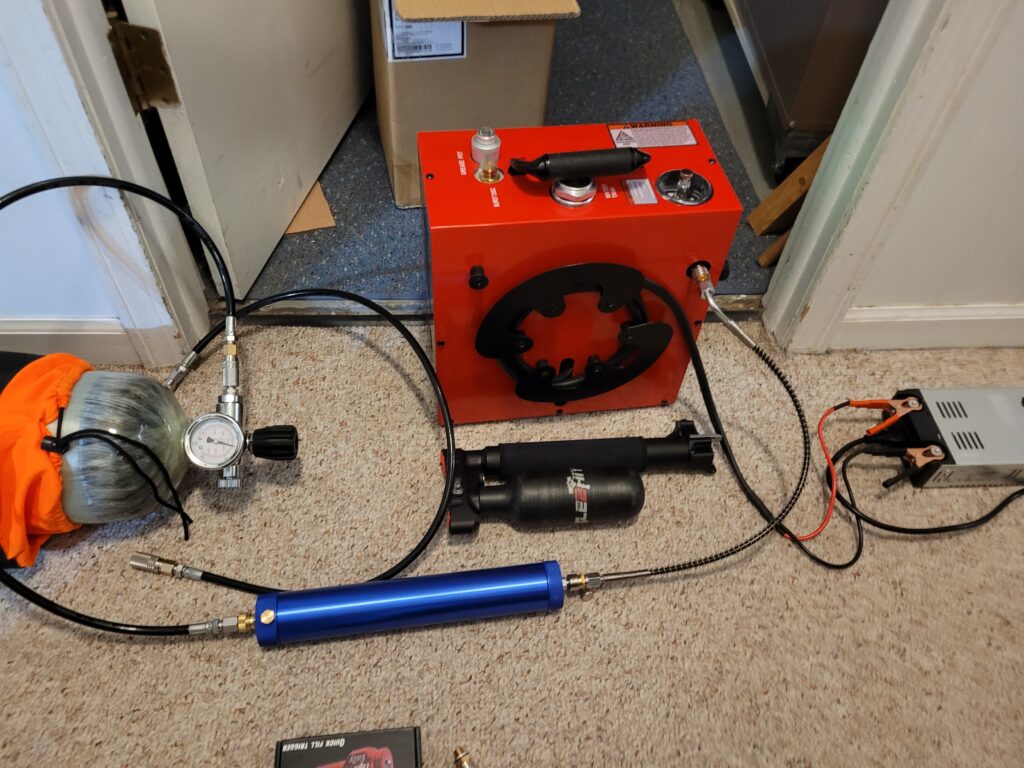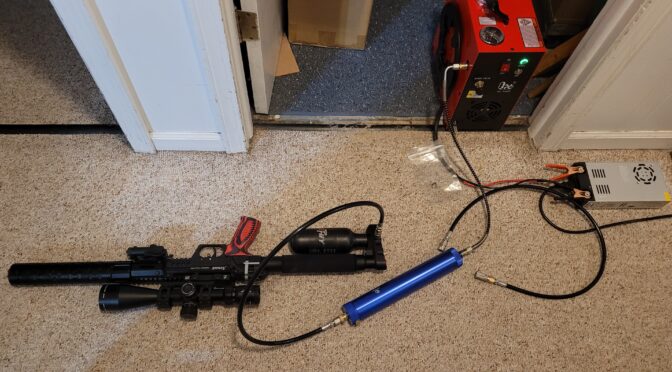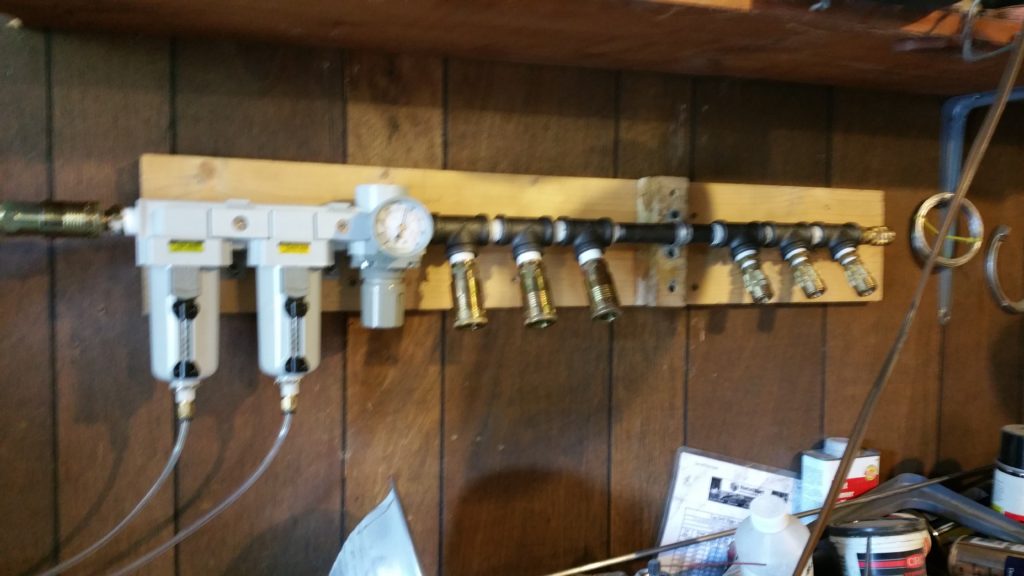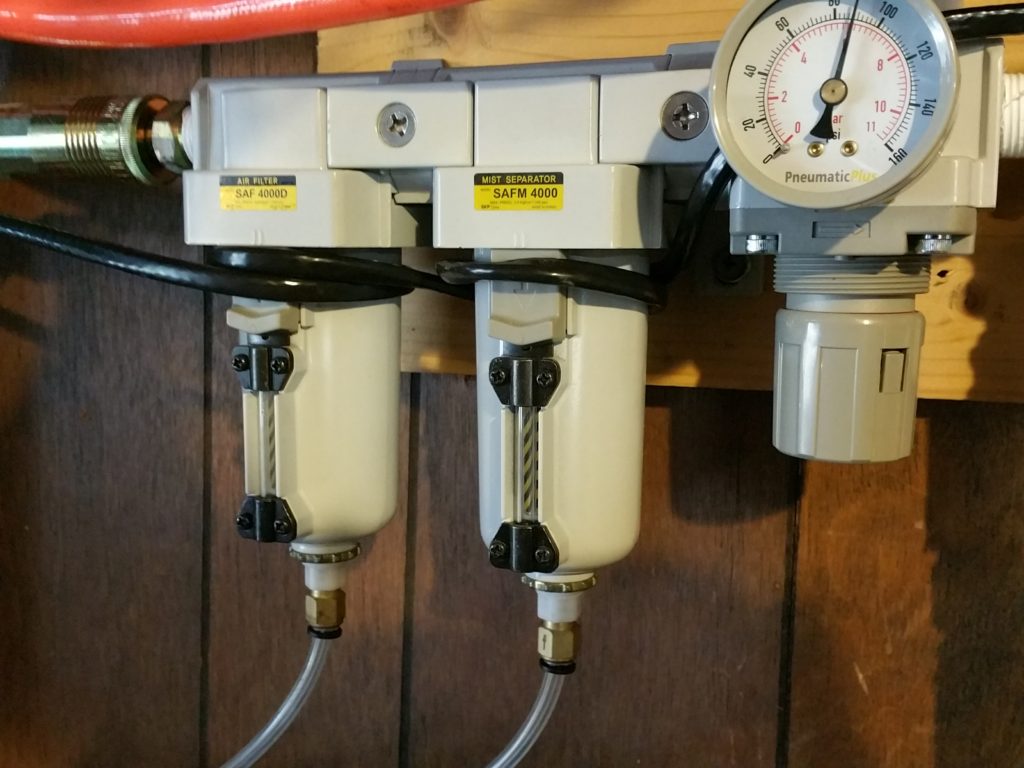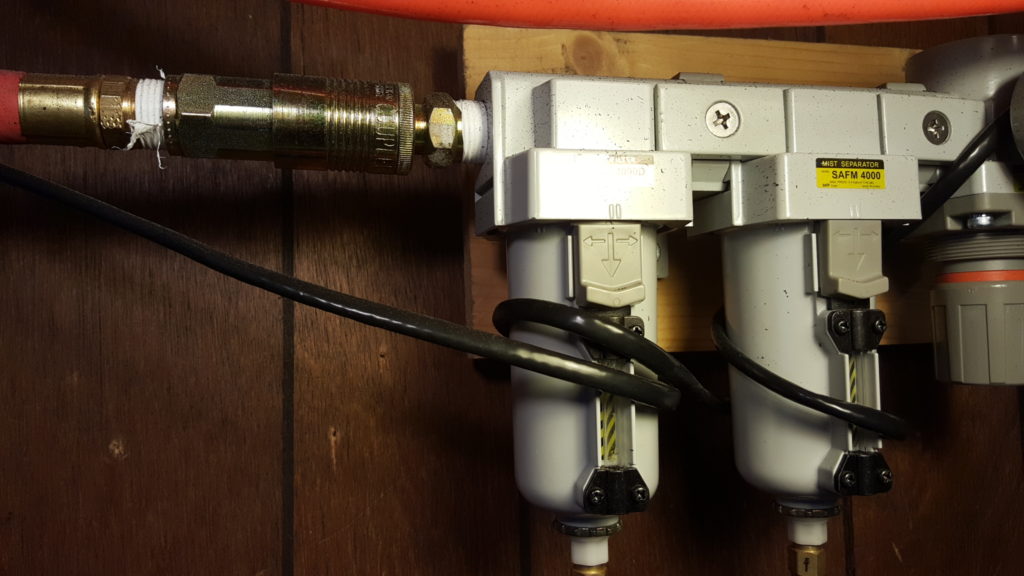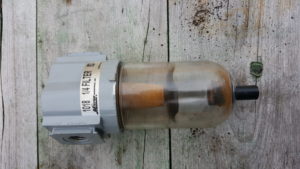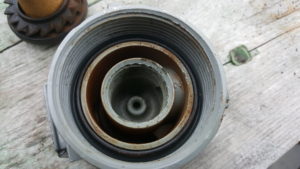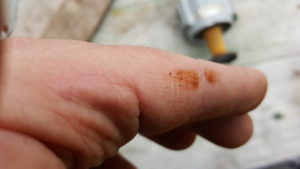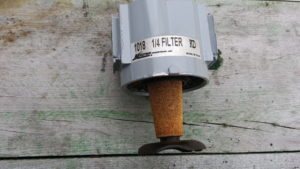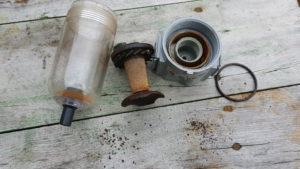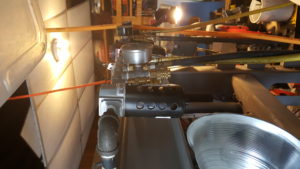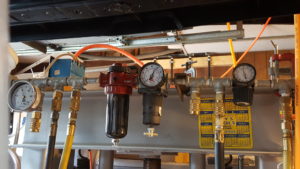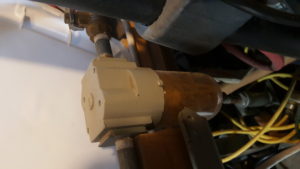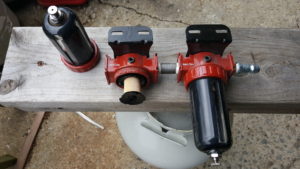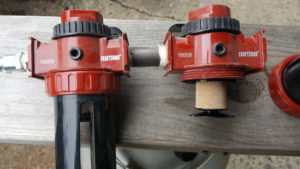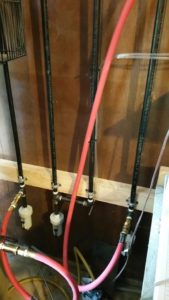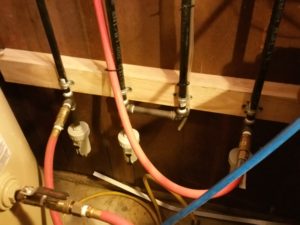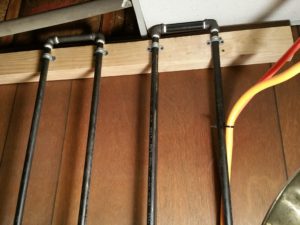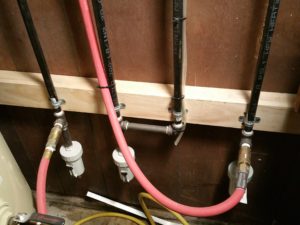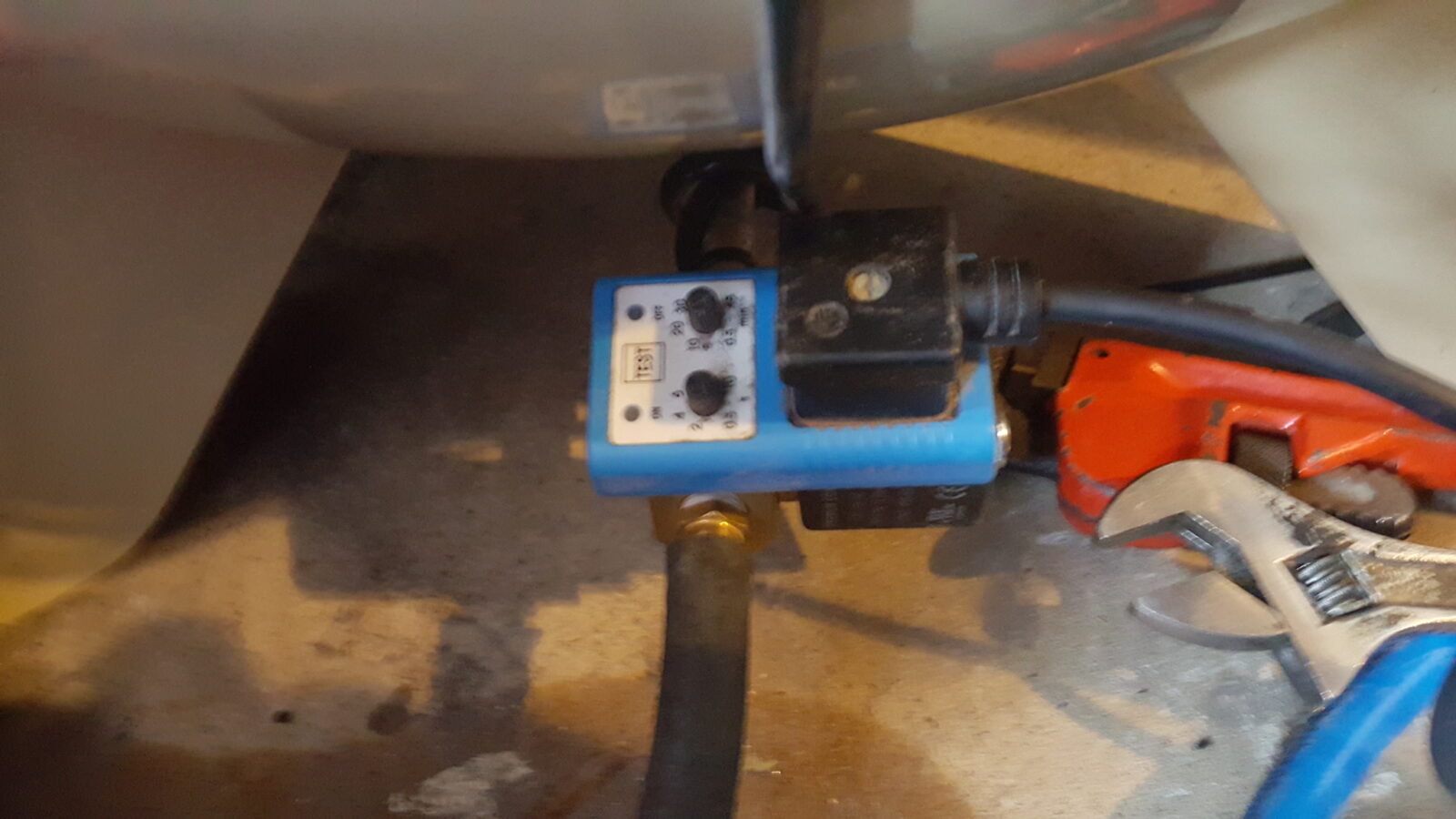In my shop, I need clean dry air for working with the plastics, the abrasive Blaster, and my air tools. It also comes in handy when I’m spraying on finishes such as Molyresin. I have certainly had my share of problems over the years caused by dirty air including air tool failures, water or oil spraying on paint, clumping of abrasive Blaster media and so forth. As time went on I identified a number of practices that could help reduce moisture in the air lines as well as other contaminants. I don’t use an inline oiler so most of my issues revolve around water, rust particles (from the tank and hard air lines) and some amount of air compressor oil that makes it past the piston rings.
The fact is that all compressed air systems will have some amount of moisture when first compressed. Natural air contains moisture and as your compressor pumps it into the tank, it is both heating and concentrating it. Once the temperature drops below where the moisture will settle out of the air, that is known as the “dew point”, that is when the water appears. Some of it will collect in the bottom of the tank causing rust and some will likely remain in the compressed air.
Now I am not an expert on this stuff but I have had to try and learn a lot over time. In this post and the two that follow it, I am going to try and explain options I looked at and what I did. I’m not going to go into a ton of theory or talk about things I didn’t check out. If I am really wrong on something, please let me know. If you really want to get into details, check out a cool website called Compressed Air Best Practices that has tons of information.
I live in Michigan and have a ton of moisture to fight. I have a lot of air powered wrenches and sanders plus an abrasive blast cabinet and plasma cutter so this is a big deal to me – I need clean dry air. For me, there’s not one single cost effective solution so I approach the reduction of moisture in stages. The first and cheapest approach is to dry your air is to Drain your tank! I can’t emphasize this enough!!
As water settles inside the tank, it gets blown all over the place during use plus it is causing your tank to rust and form sediment at the bottom. The best offense is a good defense. Get rid of the water by regularly draining your tank and this may mean several times every day. Here’s the amount of moisture I blew out the drain after my compressor ran for several hours (and I do mean actual run time). It’s about a half a cup of water if I were to guess:
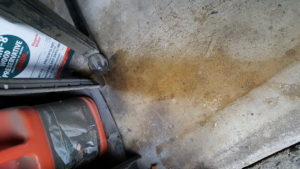
Water sitting in your tank not only means you have water blowing everywhere in your tank and potentially adding moisture to the outgoing air but it also causes rust inside your tank both adding further contaminates and weakening the tank over time. We were all young once, right? I bought some low end Devilbiss compressor 20-25 years ago and had it in the garage. My dad asked if I had ever drained it and I really hadn’t been diligent about it. We opened the valve and it was stunning as to how much smelly rusty water came out. That sold me. Over the years I have heard stories of blown / leaky corroded tanks but thankfully have never had that happen first hand. For me, it is the moisture in the lines that is the problem and regular draining of the tank is the first step in combating that.
So, if draining regularly is a good idea, what are our options for small shops?
Use the drain valve that came with the compressor:
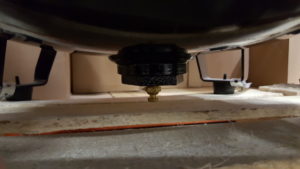
Every consumer or prosumer grade compressor I have seen comes with a drain valve. When you get up to the industrial models, you may see a hole where they expect you to add something but for most small shops what you have will either look like the old petcock valve from a radiator or a round unit like the above. Even though reaching those things is a total headache, one option is to live with it, reach under the tank and drain it. If you are a light user, do this when you are done for the day and leave it open letting everything run out or at least let stop after the bulk of the condensation stops. If you are doing a ton of work, you may need to drain it every few hours vs. at the end of the day. It all depends on your experience and how much water you see coming out for a given amount of time. In general, once is a day is fine and by doing it at the end, it doesn’t sit there needlessly for however long until the next use.
Pros with this approach: Usually is supplied with the compressor so it is ready to go with not additional investment and it does work.
Cons: Total headache to reach, ejects the water right under the tank waiting to evaporate and go back into the tank not to mention is messy because you can’t readily control where the condensate goes, and you have to remember to do it (which is the hardest thing always). Also, these drain valves are pretty cheaply made, can corrode and then be a total bear to open. I really dislike these things but they are better than nothing.
If your existing drain fails for some reason, stores and vendors sell exact replacement drains but don’t do that. Do one of the next two options to make your life easier. Matter of fact, do one of the next two options as soon as you can to make your life easier.
Replace the cheap original drain with a better positioned ball valve and drain hose
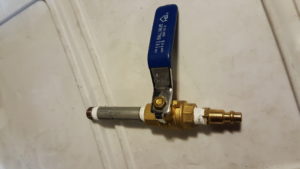
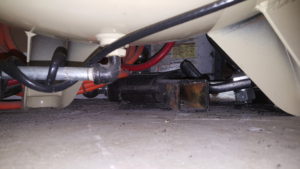
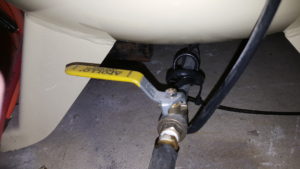
Get rid of that awful little stock valve and install a ball valve that is easier to reach. This can make things so much simpler. Odds are the old valve is 1/4″. Remove it and confirm the size. Install a nipple, a right angle fitting, a long enough piece of pipe, the ball valve itself and then a hose barb (or 1/4″ quick adapter) with a piece of hose that allows you to drain the condensate where ever you want. Be sure to wrap all the threads with PTFE tape. I buy most of my plumbing stuff from Home Depot. In general, I get pneumatic parts and supplies from Amazon such as Milton quick connect fittings, filters, etc. I always read the reviews and ratings carefully.
One tip, go with whatever length nipple and a female-female right angle pipe fitting to get the greatest flow. Also, make sure you have enough room for whatever you are installing. There is often very little clearance between the bottom of the tank and the floor. On my IR compressor, I use a “street elbow” that, even though has a relative small internal dimension, works just fine to drain water. I have a valve with a good sized handle and it is very easy to access and to turn.
Since my shop is not heated and I live in Michigan, I need to get creative. The black cable you see is a pipe warmer with a thermal switch that only comes on at 32F to keep the valve from freezing. I actually have it on a timer so it will only run 7am-10pm – when I am usually in the shop.
The rubber drain line you see is 3/8″ fuel hose pushed over a regular 1/4″ male quick connect fitting and it goes out the corner of my shop’s garage door. I’ve never needed a hose clamp and it gets the condensate out of my shop.
Pros: Quick, easy and cheap It’s also very reliable in cold weather.
Con: You still need to remember to do it and you can’t constantly do it.
Now, here’s an interesting alternative for low clearance situations. I have only seen these – I have never used one but they make sense and pretty much anything is better than that hard to reach stock valve in my opinion:
Install an automatic drain and reap the rewards!
This is the last option and one I recommend – Invest in a automatic drain that has adjustments for how often to open and how long to remain open. Let me tell you, that automatic drain is worth its weight in gold when the temperatures are above freezing. The only time I go back to the ball valve is when temperatures are below freezing and I don’t want the automatic drain to freeze open and it will do just that in cold weather. When the warm weather comes, I reinstall the automatic drain.
At any rate, the installation is the same as the ball valve except the automated unit goes in place of the manual valve. My unit is a Midwest Controls EAD-25 that is probably at least 5-6 years old. Let me put it this way, I have moved it from one compressor to the next probably three times as I wore consumer compressors out. I currently have an IR 2340 entry-level industrial compressor that has survived for 2-1/2 years, which is remarkable given how I blew through the consumer Husky models.
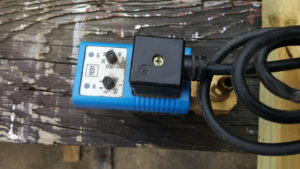
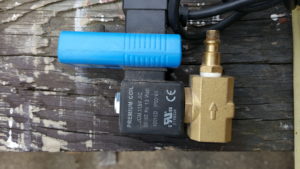
The following photos are of my doing my spring swap wherein I replace my ball valve with my freshly cleaned automatic drain valve:
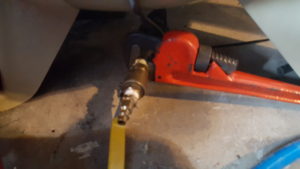
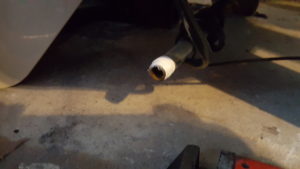
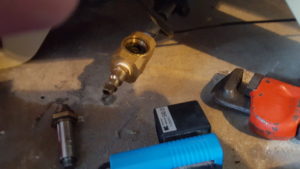
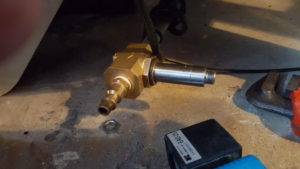
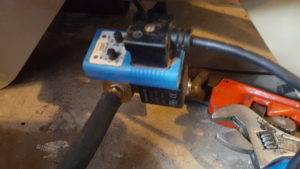
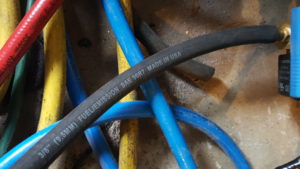
These automatic drains are simple as can be – the timer trips and an electromagnet turns on and opens the valve for the specified duration. The timer then cuts the electricity to the electromagnet and springs shove the valve back closed. The only wear point I can see is the rubber surface on the valve and mine still works fine all these years later. I just have to take it apart and clean it a few times a year, which I will post about later. The photos in this post were taken in the spring as I converted back from the ball valve to the automatic drain.
Pros: It is actually easy to install – just add the pipe and install the automatic unit, plug it in, set the timer and blow-off duration and call it even. It is the best approach I have found when the weather is above freezing.
Cons: It can be expensive if you buy a name brand but they last forever (I have never tried another brand as my local tool supplier recommended this one and it is still working!). They will freeze up in the winter (I put my ball valve back in before it gets super cold as my shop is unheated most of the time) and debris can jam it but it is very easy to clean.
This is the exact model I have:
This is my model except mine has a blue case … it’s old and still working!
Here are automatic drain with very good reviews on Amazon:
In my next post, I’ll explain how to build a condensation based moisture separator and explain some concepts for you to consider.
The three blog posts in the series are:
If you find this post useful, please share the link on Facebook, with your friends, etc. Your support is much appreciated and if you have any feedback, please email me at in**@*********ps.com. Please note that for links to other websites, we are only paid if there is an affiliate program such as Avantlink, Impact, Amazon and eBay and only if you purchase something. If you’d like to directly contribute towards our continued reporting, please visit our funding page.
Like this:
Like Loading...
